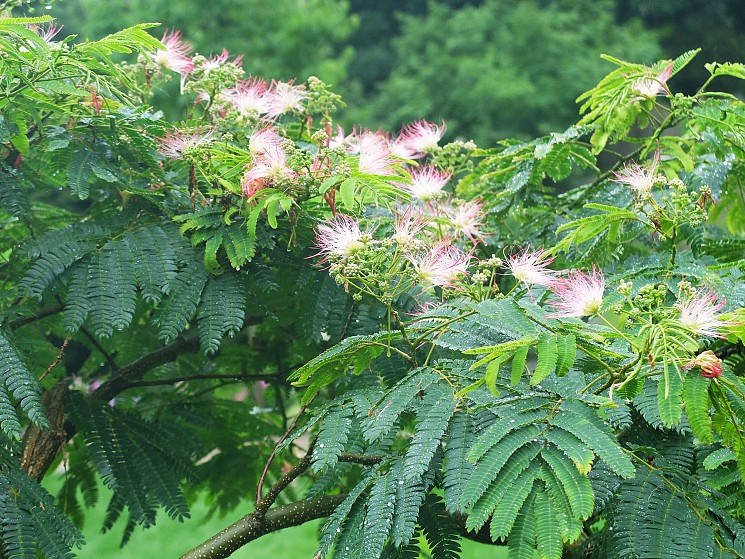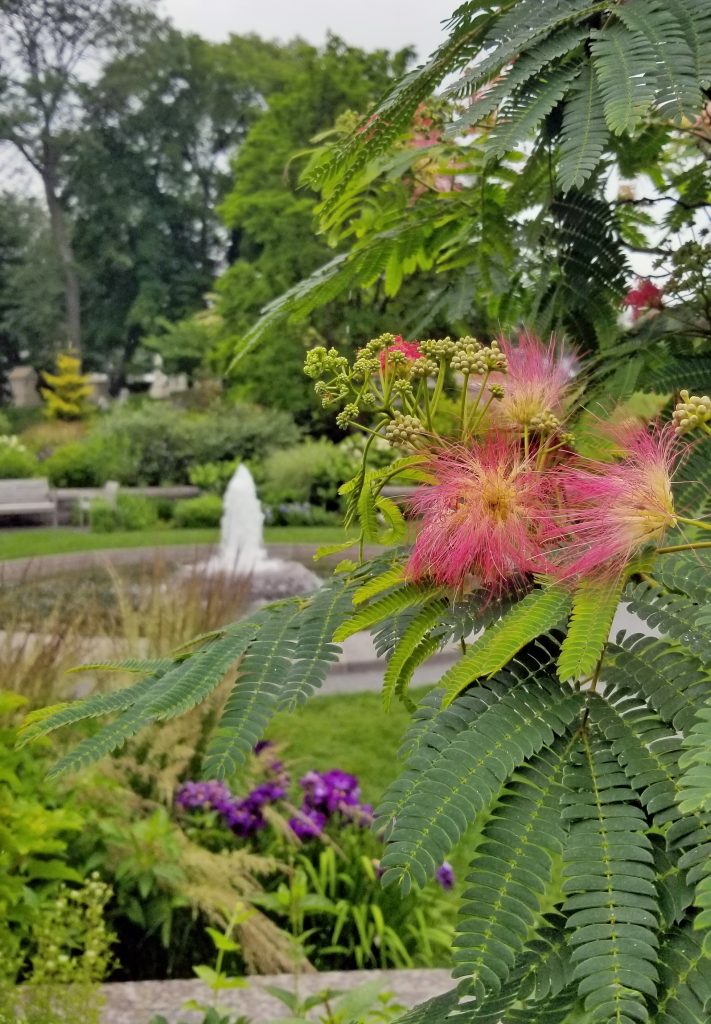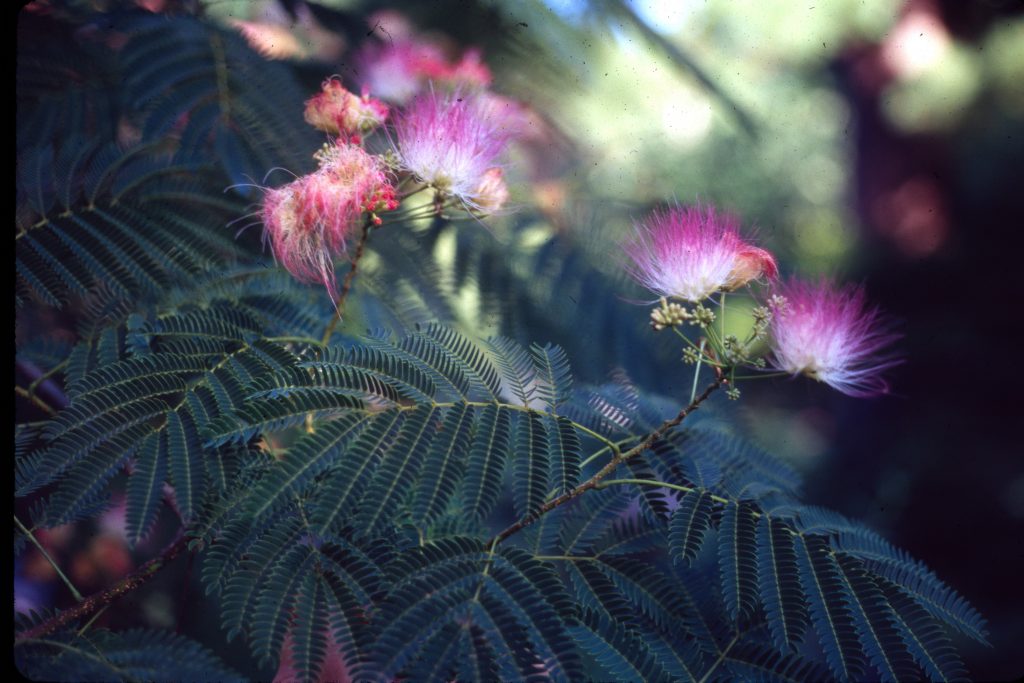Silk Tree

…as though you expected to find some strange presence behind you
coming through the diamond-paneled bay window of your sanctum
a crimson-flowered silk dressing gown…
-Keith Waldrop
Silk Tree, Albizia julibrissin in flower presents a curious, powder-puff-like flower, comprised not of petals but rather numerous showy thread-like stamens. Each stamen at one-inch or longer is deep-pink/reddish in their upper third and white at the bottom. The month of August, into late September and sometimes even earlier in late July is their long season of bloom.
Its native range is from Iran, across Asia to Japan. Botanist, Gordon P. DeWolf Jr. (1927-2019) wrote in a 1968 article in Harvard University’s Arnoldia that the genus name commemorates Italian nobleman Filoppo Albizzi who in 1749 reportedly introduced this to Italian cultivation from Istanbul (then Constantinople). DeWolf therein adds, “The earliest records of the cultivation of the silk tree in America that I have been able to find are in a plant list dated 1814, entitled Catalogue of Trees, Shrubs and Herbaceous Plants…Cultivated and for Sale at Bartram’s Botanical Garden…” Further he states, “In the first volume of Torrey and Gray’s Flora of North America, issued between1838 and 1843, Albizia julibrissin is listed (as Acacia julibrissin) …Today, it is commonly seen cultivated as a yard or lawn tree throughout the Southeast. Not uncommonly it is found persisting around old house sites, in hedgerows, along roadsides, and around dumps.”
Albizia julibrissin is a small tree 20 to 30’ in height, within the FABACEAE, the pea family. The deciduous, alternate leaves are bipinnately compound, up to 20-inches long, each with 40 to 60 leaflets. These ¼ to ½-inch long, oblong leaflets opposite each other create a fern-like, even tropical appearance. Some have observed these leaflets folding up towards each other at night. Iranian, Chinese and Japanese have thus adopted common names translated as “night sleeper”, “shut happy” and “sleep tree”.
Sally Lindfors Sullivan wrote in 1971, also in Arnoldia,about plants in early Japanese poetry. One of the earliest anthologies of Japanese poetry is the Manyosho completed 780 A. D. From therein she includes this apropostranslation,
The silk-tree that blooms in daytime
And sleeps the love-sleep at night,
Your lady should not see alone
Look well on this…
(Manyoshu VLLL: 140-1)
Sullivan adds, “As the poem states, the tree blooms in the daytime; at night the leaves fold up, two by two, signifying couples sleeping together.”
Before fanciful thoughts linger too long, there is a reality that Albizia julibrissin has been listed as invasive in several of our southern states, but not in our state. The Massachusetts Department of Agricultural Resources, maintains a list of Prohibited Plants, which includes only five trees; Acer platanoides, Norway maple, Acer pseudoplatanus, sycamore maple, Ailaanthis altissima, tree of heaven, Phellodendron amurense, Amur cork-tree, and Robinia pseudoacacia, black locust.
On a future summer visit look for our Albizia julibrissin, Silk Tree on Fountain Avenue and in Asa Gray garden among other locations.
…Pink Silk, Plush Pink, Lush Iced Pink,
Brandied Pink, Sheer Pink Champagne, Candlelight Pink, Fluffy Moth Pink,
Softsilver Pink, Pinkyring, Turn Pale Pink, A Little Pink, Pinker, Pink Glo!,
Happy-Go-Pink, Daredevil Pink, By Jupiter Pink, Stark Raving Pink, Viva La Pink.
-David Trinidad








Leave a Reply